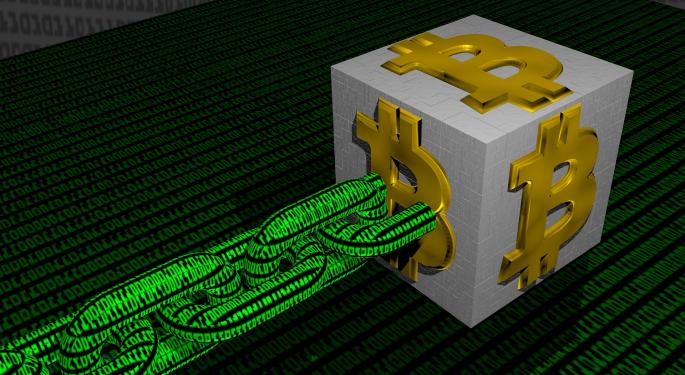Courtesy of Benzinga
Cryptocurrency proved to be a smashing hit in 2017, exceeding the wildest predictions in returns and the investor frenzy it generated, although crypto's legitimacy as an investment option has always been in question. Whichever side investors fall on, there's no question cryptocurrencies have made a ripple in the financial markets.
Bitcoin, which accounts for roughly 44 percent of the market cap of all digital currencies, is the toast among investors. Founded in 2009, it's the most widely used and known crypto.
Some of the late entrants such as Ethereum, Ripple, Litecoin, Dash and IOTA have made a mark of their own.
Bitcoin: Banking On The Early Mover Advantage
Bitcoin was initiated as a peer-to-peer electronic cash system in 2009, and has since then seen its value increase by leaps and bounds. Bitcoin was first traded on an exchange only in 2010, which renders the technical value of a bitcoin in 2009 as zero. The highest value at which bitcoin ever traded in 2010 was 39 cents.
Bitcoin rallied about 1,500 percent in 2017 through Dec. 27, with the rally picking up pace late in the year. The digital currency has scaled several psychological barriers and is now perched at the $14,000 level, according to Coinbase.
One explanation of this irrational exuberance: The interest of retail investors in capitalizing on a breathtaking rally, and expectations that professional investors — many of whom were skeptical of a bubble in the making — could jump into the fray.
Related Link: What Will Be The Biggest Story For Bitcoin In 2018?
Ethereum's Surreal Rally
Ethereum, the second most widely traded currency, had its origin in 2013, when Vitalik Buterin, a bitcoin programmer, described it on paper. The system went live in July 2015, with 11.9 million coins pre-mined for crowd sale.
The collapse of the DAO project in 2016 led to the forking of Ethereum into two separate blockchains, with the original continuing as Ethereum Classic and the new one iteration simply called Ethereum.
The value token of the Ethereum blockchain is called ether, which is traded on cryptocurrency exchanges under the code ETH.
Over 2017, Ethereum has added about 9,000 percent, as it moved from above $8 at the end of last year to about $700 as of Dec. 28.
By market cap, Ethereum accounts for roughly 12.5 percent of the total for all digital currencies.
The ‘Rippling' Ripple
Ripple, which accounts for over 9 percent of total crypto market cap, was built as a digital payments network for real-time financial transactions. Its currency token is the Ripple XRP, and Ripple owns 61 percent of XRPs.
The market cap of XRP is nearly $57 billion, according to CoinGecko.
From $0.0064 at the end of 2016, the XRP has soared about 21,000 percent to $1.47 as of Thursday, according to CoinGecko. On Dec. 21, 2017, XRP scaled the $1 barrier for the first time.
Litecoin: Not a Pushover
Litecoin, a fork of bitcoin, has caught up with its more renowned counterpart due it being cheaper to mine and its faster transaction speed. To complete one block of Litecoin, it takes just 2.5 minutes compared to 10 minutes for mining a Bitcoin block, according to Wealth Daily.
Additionally, there is the advantage of the Litecoin community being a more cohesive unit, which ensures stability.
Litecoin has gained roughly 5,500 percent over 2017 and is trading around the $247 level, according to CoinGecko.
Related Link: Has The Crypto Craze Killed The Marijuana Investing Buzz?
Dash: Sprinting Away
Dash, which was originally called XCoin and later changed its name to Darkcoin, adopted its present name in March 2015.
Apart from having bitcoin's feature set, it also facilitates instant transactions, private transactions and operates a self-funding mechanism that allows the network to pay for work that adds value to the network.
Dash has run up through 2017, with about a 10,200-percent climb, and was trading Thursday around $1,100 level, according to CoinMarketCap.
IOTA: The Currency For IoT
IOTA is a cryptocurrency facilitating secure communications and payments between machines on the Internet of Things, or IoT. It uses directed acyclic graph technology and offers its services for free, irrespective of transaction size.
From a value around 64 cents in mid-June, MIOTA, the token currency of the IOTA platform, has swelled 450 percent and was trading around $3.52 Thursday, according to CoinMarketCap.




